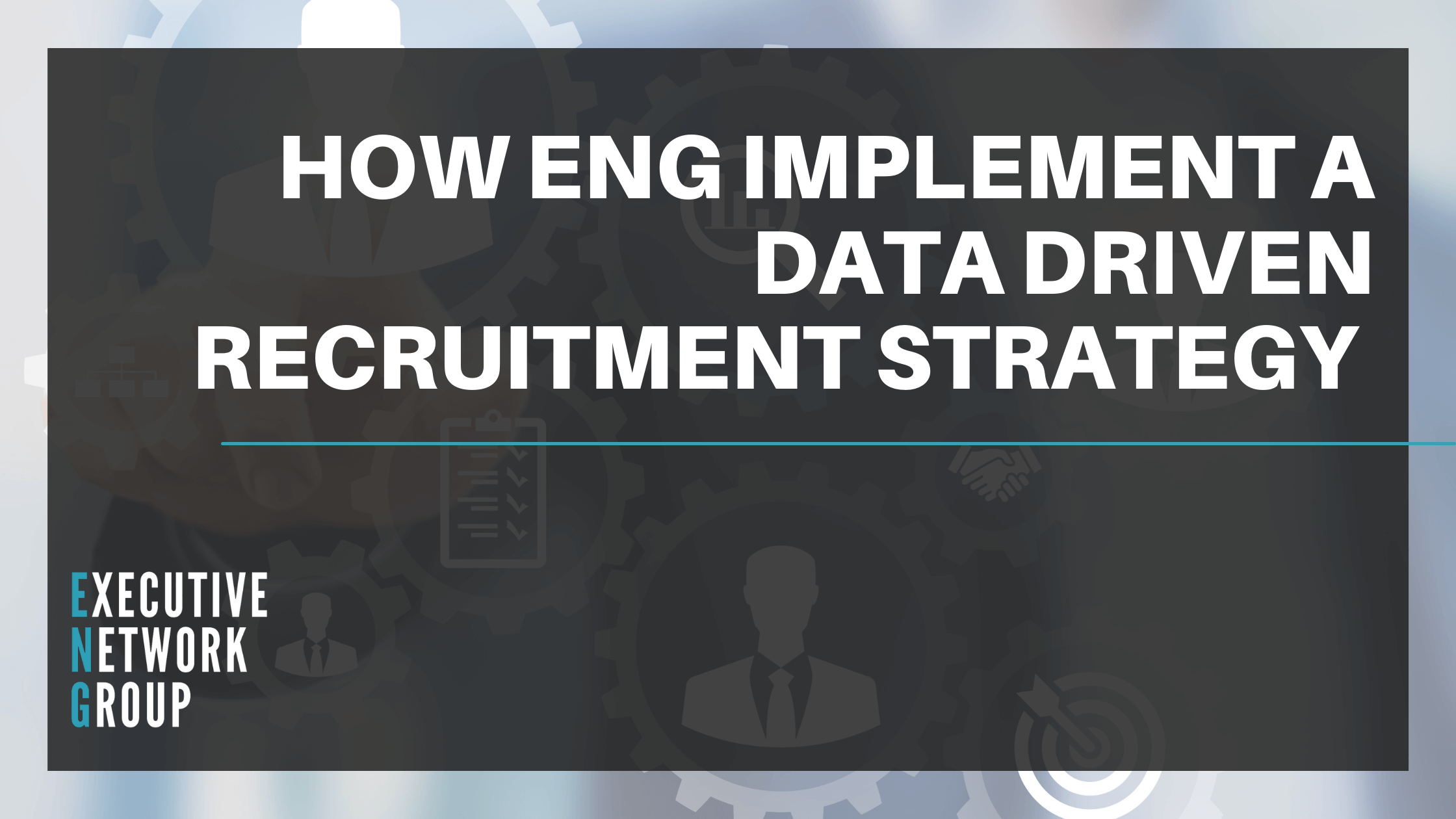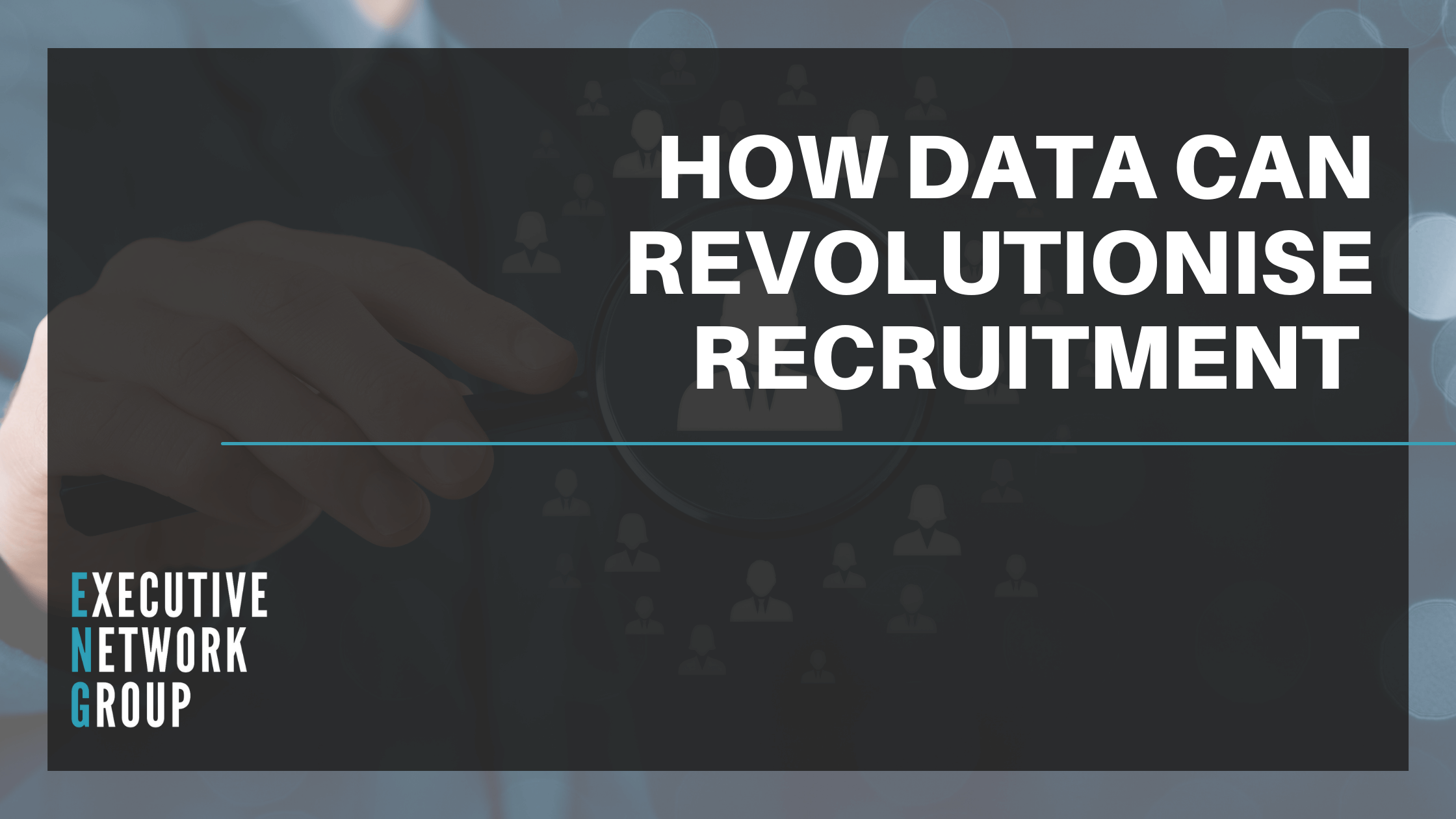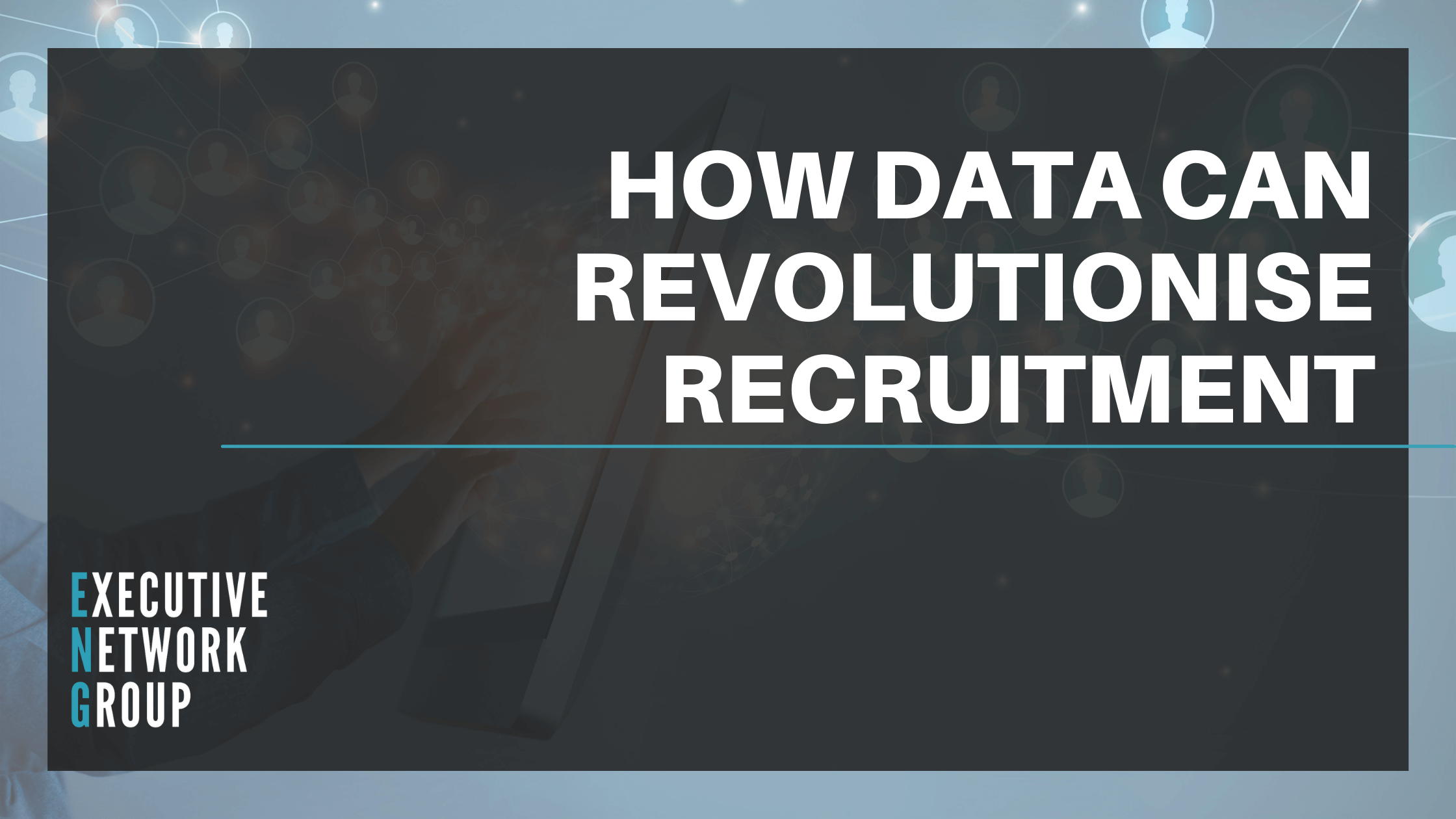How ENG Implement a Data Driven Recruitment Strategy

In a world becoming more data driven with the technological advances and influence of AI – how can we incorporate this approach to our hiring process and decisions without taking the “human” out of human resources?
This is a question we’ve pondered here at Executive Network Group, and after spending considerable time and resource investigating and quantifying our client’s challenges, this has led to the creation of our ENG 3D Framework® - with data being one of the pillars underpinning this platform.
We understand that harnessing data will act as a recruitment ally, thus enabling us to fulfil our delivery process in an objective and transparent manner, making decisions on data facts as opposed to opinion and evidencing both our quality of service and findings throughout.
The importance of being able to analyse information and make informed decisions has helped both ourselves and our clients in a time where attracting, hiring and continuously engaging talent has never been more challenging. Whilst we agree as recruitment experts that we need to gain a full understanding of a brief (inclusive of culture fit) which in most cases data can’t assess, there are areas in which we can use data to plan continuous successful campaigns helping our clients to accomplish their full potential.
A recruitment process creates a wealth of candidate data and often this goes to waste. This is where ENG aim to make the difference and ultimately make recruitment better. In a process that produces an exhaustive amount of data, we have worked to understand which metrics can make an insightful impact with our partners and shape their future campaigns and hiring plans ultimately resulting in long term success.
Recruitment Data and Project Analytics
This data and project analytics give a comprehensive data view of a hiring project, from psychometric assessment scoring through to screening and competency scores, this is an essential part of the hiring process to build a robust candidate profile when presenting to our partnering clients. The project analytics showcase the search we have accomplished including source of candidate, our process within that marketspace, and the volume of individuals we have filtered at each stage to lead to a successful result.
Diversity & Inclusion Data
Gaining this information on diversity within your selected talent pool is imperative to the success of a recruitment process. It’s proven that a diverse workforce can increase productivity and companies see an average of 60% improvement on decision making abilities. (Source = Culture Amp blog).
Communicating a detailed D&I report empowers the client partner to gain a clear grasp of how their opportunity is being perceived by the talent pool and who they are attracting. By doing so we can assess and analyse the gender, ethnicity, age and disability factors within the candidate range alongside the other protected characteristics. This insight can act as a benchmark when planning future campaigns and can be adjusted accordingly to their tailored inclusion agenda. Our diversity data is fully encrypted and to gain this information we have partnered with a specialist D&I consultancy.
Qualitative Data.
We deliver active insight from our network and our partners. Our recruitment experts extract data from their research, insights and longlisting process to allow an organisation to understand if their opportunity is aligned to the market average. This can be data such as compensation package, job title, desired location radius and more. We can tailor the information collated to the client need.
Qualitative data is indicative of how an opportunity is perceived in the specified marketplace with the desired candidate demographic and how it compares to competitor’s offerings.
Brand Awareness & Brand Attractiveness Data
A real time perspective on how the selected talent pool perceives the business - both at initial selection and throughout the process. We measure this data at progressive stages as this can be a varying factor based on experience. The brand awareness is a binary data stat, and the attractiveness is a scoring range. An informative insight on how to attract a demographic and by using this data our clients can comprehend and plan on how to enhance attractiveness and their internal recruitment process.
This data gives an objective company view and organisations have been able to adapt from feedback such as preparing candidate packs or adapting their interview process to continually improve.
There are hundreds of data metrics that can be implemented within a recruitment process. After years of delivering on successful recruitment campaigns - both contingent and retained, we have honed these skills and data driven strategies and refined these 4 key metrics to give the biggest positive influence on our clients.
If you would like to discuss how the above could assist your recruitment strategy please feel free to get in touch, it would be insightful to hear how you utilise data strategies in your current hiring process.

